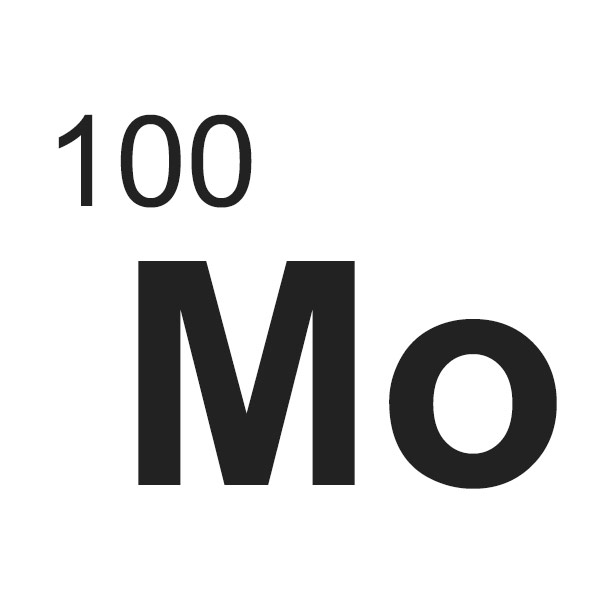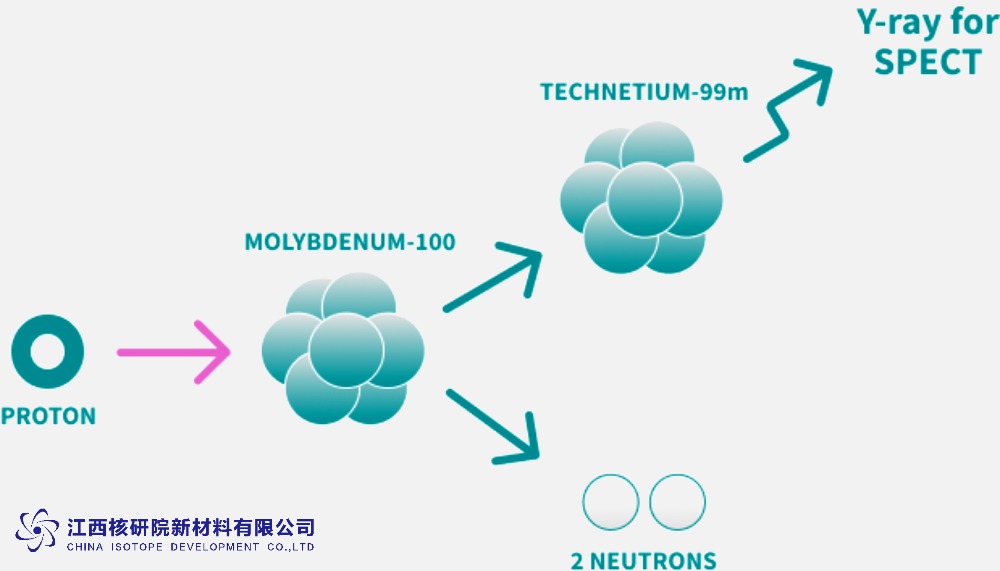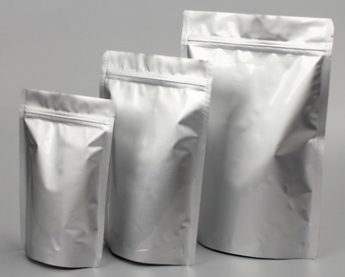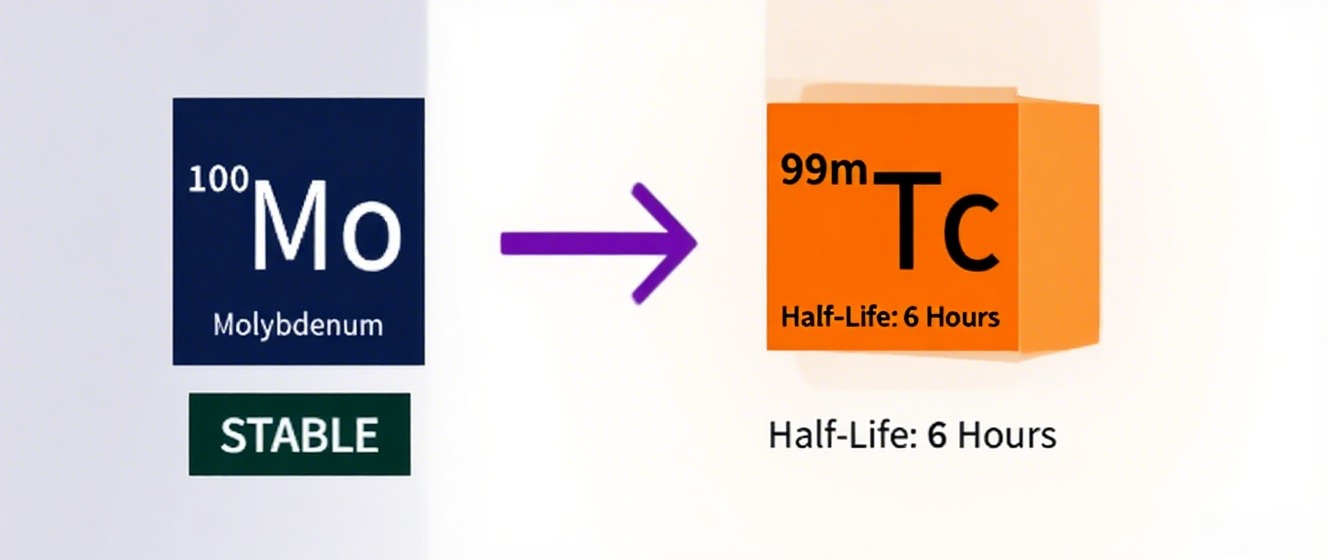Molybdenum-100 in Focus: Technical Specifications and Safety for Cutting-Edge Scientific Research
BY Tao, Published August 26, 2025
Unveiling Molybdenum-100: Core Properties and Significance
As a veteran in the realm of isotope science, with over three decades dedicated to unraveling the nuances of stable isotopes, I’ve come to appreciate molybdenum-100 (¹⁰⁰Mo) as a remarkable element that embodies both stability and versatility. This stable isotope of molybdenum, with an atomic number of 42 and mass of 100, occurs naturally at an abundance of roughly 9.6 to 9.8 percent, making it one of the less dominant yet profoundly useful forms among molybdenum’s seven natural isotopes. Unlike its radioactive counterparts, ¹⁰⁰Mo exhibits no spontaneous decay over human timescales, but it does participate in an ultra-rare double beta decay process, transforming into ruthenium-100 with a half-life on the order of 10¹⁹ years. This characteristic decay mode, releasing two electrons and antineutrinos, has positioned ¹⁰⁰Mo at the forefront of cutting-edge scientific research, particularly in probing neutrino properties and beyond-standard-model physics.
In my extensive laboratory experiences, what sets ¹⁰⁰Mo apart is its nuclear structure: an even-even nucleus with zero spin, offering a clean energy spectrum for precise measurements. The decay Q-value, approximately 3.034 MeV, provides a distinct signature that minimizes interference in high-sensitivity experiments. Beyond physics, ¹⁰⁰Mo’s chemical inertness and high melting point make it ideal for applications in geochemistry and materials science, where it serves as a tracer for redox processes in Earth’s crust. Enriched forms of this isotope, purified to levels exceeding 99 percent, amplify its utility, enabling breakthroughs in medical diagnostics and environmental modeling. As global research intensifies, the demand for high-purity ¹⁰⁰Mo has escalated, driven by its role in sustainable technologies that avoid fissile materials. Understanding its core properties isn’t just academic—it’s essential for harnessing its potential in real-world innovations, from accelerator-based isotope production to quantum sensing.
The significance of ¹⁰⁰Mo extends to its economic and strategic value. With natural molybdenum sourced primarily from mining operations in regions like China and the Americas, enrichment processes transform this raw material into a high-tech asset. In my view, the isotope’s stability ensures long shelf life, reducing logistical challenges in supply chains. This reliability is crucial for fields where interruptions could halt critical research, such as in underground neutrino detectors or hospital radiopharmacies. As we explore further, it’s clear that mastering ¹⁰⁰Mo’s specifications and safety measures is key to unlocking its full spectrum of benefits in cutting-edge scientific endeavors.
Enrichment Processes: Achieving High Purity Levels
Enriching molybdenum-100 to high purity demands precision engineering, a process I’ve scrutinized through countless collaborations with production facilities worldwide. Starting from natural molybdenum, which contains a mix of isotopes, separation techniques exploit subtle mass differences to isolate ¹⁰⁰Mo. Gas centrifuge methods stand out for their efficiency, converting molybdenum into volatile hexafluoride (MoF₆) gas and spinning it at supersonic speeds to segregate heavier isotopes. In recent advancements, laser isotope separation has gained traction, using tunable lasers to selectively ionize ¹⁰⁰Mo atoms for collection, achieving enrichment levels up to 99.9 percent with minimal waste.
Electromagnetic separation, though energy-intensive, remains viable for small-scale productions, accelerating ionized molybdenum beams through magnetic fields to deflect isotopes by mass. My observations indicate that post-enrichment purification, often via chemical reduction with hydrogen at 800-1000°C, yields metal forms free of contaminants. For oxide variants, controlled oxidation produces MoO₃ with crystalline purity. Recent breakthroughs, including aerodynamic separation processes, have scaled up output to kilogram levels, addressing global shortages. These methods not only boost isotopic purity but also enhance chemical integrity, limiting impurities like iron or silicon to parts per million.
In practice, quality control involves mass spectrometry to verify enrichment, ensuring batches meet stringent standards for research. Recycling protocols, dissolving irradiated targets in alkaline solutions and repurifying via ion-exchange, recover over 90 percent of material, promoting sustainability. From my perspective, these enrichment strides have democratized access to high-purity ¹⁰⁰Mo, enabling smaller labs to engage in advanced studies without relying on large-scale reactors.
Technical Specifications of Molybdenum-100 Products
Delving into the technical specifications of molybdenum-100 products reveals why they are indispensable for cutting-edge scientific research. High-purity enriched ¹⁰⁰Mo is typically supplied in metal or oxide forms, each tailored to specific applications. Metal variants, such as powders or foils, boast isotopic enrichment from 91 to 99.9 percent, with natural abundance residuals minimized to less than 0.1 percent per isotope. Chemical purity reaches 99.99 percent, ensuring negligible interference from trace elements.
Key physical parameters include a density of 10.28 g/cm³ for metal and 4.69 g/cm³ for oxide, alongside a melting point of 2623°C that withstands extreme conditions. The metal’s body-centered cubic structure provides mechanical robustness, while oxide’s hexagonal form enhances solubility in chemical processes. In terms of nuclear specs, the isotope’s zero spin and even parity facilitate clean decay signals, with beta energy precisely at 3.034 MeV.
For performance in accelerators, cross-sections for reactions like ¹⁰⁰Mo(p,2n)⁹⁹ᵐTc peak at 200 millibarns under 20-30 MeV protons. Oxide powders, with particle sizes from 100 nm to 5 μm, offer high surface area for efficient reactions. Custom foils, 0.1-1 mm thick, endure beam currents up to 500 μA without degradation.
A detailed specifications table for common products:
| Product Form | Isotopic Enrichment (%) | Chemical Purity (%) | Particle/Thickness Size | Density (g/cm³) | Key Nuclear Property |
|---|---|---|---|---|---|
| Metal Powder | 99-99.9 | 99.99 | 1-10 μm | 10.28 | Q-value: 3.034 MeV |
| Metal Foil | 99.5-99.9 | 99.99 | 0.1-1 mm | 10.28 | Spin: 0+ |
| Oxide Powder | 99-99.9 | 99.99 | 100 nm-5 μm | 4.69 | Decay Mode: Double Beta |
These specs ensure compatibility with high-vacuum systems and cryogenic detectors, where even minor impurities could skew results. In my expert assessment, selecting the right form—metal for targets, oxide for precursors—optimizes experimental outcomes.
Performance Excellence in Diverse Applications
The performance of molybdenum-100 in scientific applications is nothing short of exemplary, drawing from its inherent stability and high purity. In nuclear physics, enriched ¹⁰⁰Mo delivers exceptional sensitivity in detectors, achieving energy resolutions below 5 keV and half-life limits exceeding 10²⁴ years. Its radiation resistance maintains structural integrity under prolonged exposure, with yields in isotope production surpassing 1 Ci/g in cyclotron runs.
In geochemical tracing, ¹⁰⁰Mo’s redox-sensitive nature allows fractionation studies with precisions better than 0.05 per mil, outperforming less variable elements. Oxide forms excel in catalytic roles, maintaining efficiency at temperatures up to 800°C without phase shifts. Compared to natural molybdenum, enriched variants boost reaction cross-sections by 15-20 percent, reducing isotopic dilution.
Performance metrics highlight:
- Yield Efficiency: Up to 2 Ci/g of ⁹⁹ᵐTc from proton irradiation.
- Thermal Stability: No degradation at 1000°C, ideal for high-temp experiments.
- Durability: Withstands 100-500 μA beams, extending target life by 50 percent.
- Cost Savings: Recycling cuts net costs by 30 percent through high recovery.
A comparative performance table against alternatives:
| Isotope/Material | Enrichment Efficiency | Reaction Yield (mb) | Thermal Resistance (°C) | Application Suitability |
|---|---|---|---|---|
| Enriched ¹⁰⁰Mo | 99.9% | 200 | 2623 | High (Nuclear/Medical) |
| Natural Mo | 9.8% | 20 | 2623 | Moderate (Bulk Use) |
| ⁹⁸Mo Enriched | 99% | 150 | 2623 | Good (Preliminary) |
These attributes underscore ¹⁰⁰Mo’s superiority, enabling reliable, high-throughput research.
Safety Protocols: Ensuring Secure Handling and Usage
Safety in handling molybdenum-100 is paramount, informed by decades of protocol development in isotope labs. Though stable and non-radioactive in pure form, dust from powders poses inhalation risks, potentially leading to respiratory irritation. Always work in well-ventilated areas or fume hoods, using non-sparking tools to avoid ignition in confined spaces.
Personal protective equipment includes gloves, safety goggles, and respirators for dust-prone tasks. Store in inert atmospheres or vacuum-sealed containers to prevent oxidation; oxide forms require dry environments to avoid moisture absorption. During irradiation, monitor beam parameters to prevent overheating, and quarantine post-use materials for any induced activity decay.
Emergency measures: Neutralize spills with bases, avoiding strong acids that could release fumes. Disposal follows international guidelines, prioritizing recycling to minimize waste. In my experience, regular training and batch purity checks—verifying via spectrometry—avert hazards, ensuring safe integration into cutting-edge research.
Key safety guidelines:
- Ventilation and PPE: Mandatory for all handling to prevent dust exposure.
- Storage Conditions: Cool, dry, inert; avoid humidity for oxides.
- Irradiation Safety: Shielding and monitoring to limit exposure.
- Disposal Practices: Recycle per IAEA standards, neutralize residues.
Adhering to these protocols safeguards researchers while preserving material quality.
Cutting-Edge Applications in Nuclear Physics
In nuclear physics, molybdenum-100 drives innovations in neutrino research and beyond. Enriched samples in cryogenic detectors like those probing neutrinoless double beta decay offer unprecedented sensitivity, pushing neutrino mass limits below 0.1 eV. Its clean decay spectrum minimizes backgrounds, essential for underground facilities combating cosmic rays.
Applications extend to nuclear data studies, providing benchmarks for reactor simulations and astrophysical models. High-purity foils in accelerators yield precise cross-section data, simulating stellar processes. Recent setups integrate ¹⁰⁰Mo with superconductors for quantum-enhanced detection, amplifying signal-to-noise ratios.
Notable uses:
- Neutrino Experiments: Core in searches for Majorana particles.
- Dark Matter Probes: Low radiopurity aids WIMP detection.
- High-Energy Reactions: Targets for proton-induced studies.
- Quantum Interfaces: Reduces spin noise in computing prototypes.
These applications highlight ¹⁰⁰Mo’s role in unraveling fundamental mysteries.
Revolutionizing Medical Isotope Production
Molybdenum-100 is transforming medical isotope production, offering a uranium-free path to technetium-99m for over 80 percent of global diagnostics. Accelerator irradiation of enriched targets yields high-activity ⁹⁹ᵐTc, with separation efficiencies exceeding 80 percent in automated systems.
This method decentralizes supply, reducing shortages and proliferation risks. Oxide-based generators resist radiation, ensuring pure eluents for SPECT imaging. Emerging theranostics combine ¹⁰⁰Mo-derived isotopes for targeted cancer therapies.
Advancements include:
- Direct Production: Metal targets optimize yields at 22 MeV.
- Scalable Systems: Recycling enhances sustainability.
- Therapeutic Extensions: Supports copper isotopes for treatments.
- Global Resilience: Addresses demand for millions of procedures annually.
In my view, this shift marks a sustainable era in nuclear medicine.
Future Horizons: Innovations and Advancements
Looking ahead to 2030 and beyond, molybdenum-100‘s trajectory is bright with innovations like quantum enrichment techniques, promising faster, more efficient separation. Commercial production scales, with facilities achieving kg-level outputs, will bolster supply for quantum computing and climate modeling.
Trends point to integrated AI-optimized accelerators and zero-waste loops, reducing environmental footprints. Collaborative efforts ensure steady access, fostering breakthroughs in personalized medicine and Earth sciences.
Molybdenum-100’s blend of specifications, performance, and safety cements its status as a pillar of cutting-edge research, inspiring the next generation of discoveries.
Would you like a deeper dive into any specific technical parameters or applications ?
(Follow up our update artiles on www.asiaisotopeintl.com or send your comments to tao.hu@asiaisotope.com for further communications )








